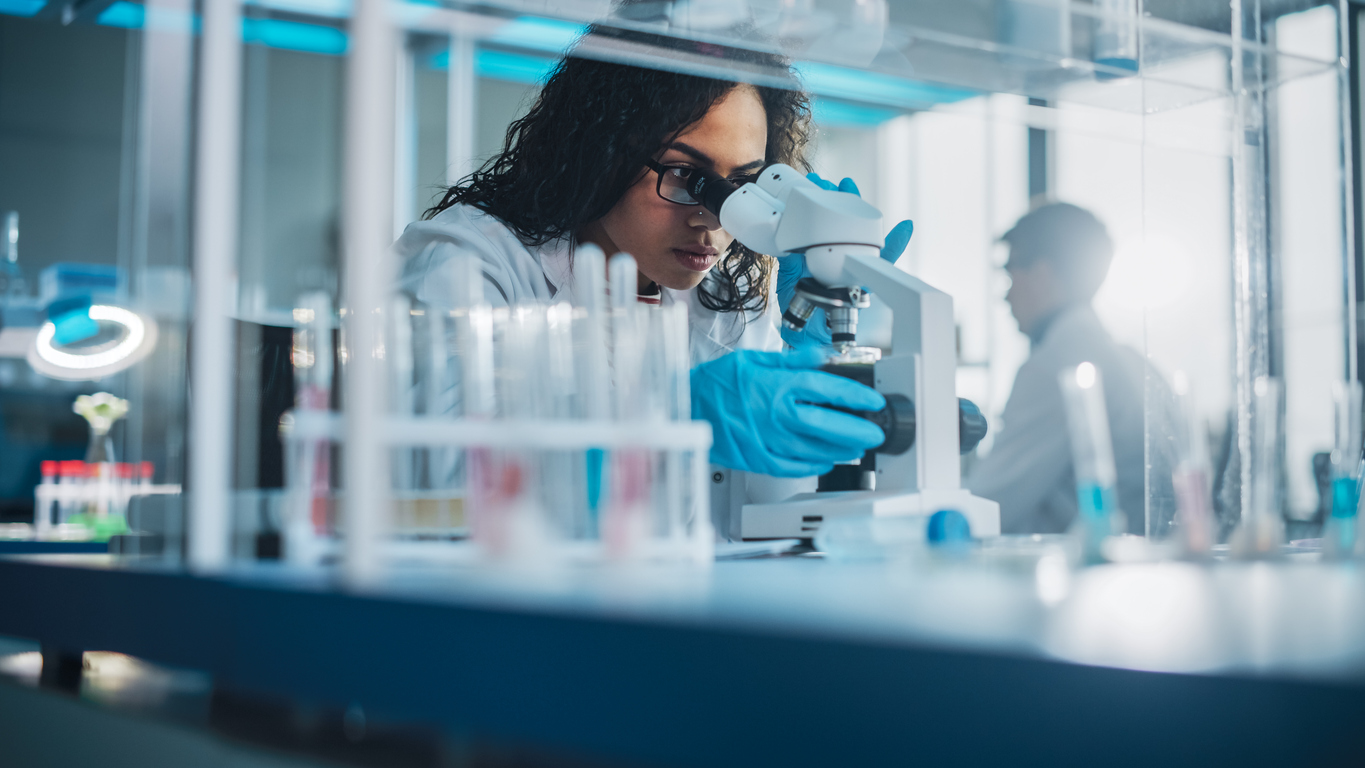‘Game-changer’ equipment will enable GW4 researchers to accelerate integrated understanding of health

£2.6million secured by GW4 Alliance researchers will open-up groundbreaking health research possibilities
Researchers from the GW4 Alliance have been awarded £1.5million to install the region’s first cryo-focused ion beam-scanning electron microscope (cryo-FIB-SEM), a revolutionary piece of equipment which will enable the use of novel technologies to improve research into topics such as the human immune system, animal-to-human transmitted diseases, and antimicrobial resistance.
The new equipment, funded by the Biotechnology and Biological Sciences Research Council (BBSRC) ALERT scheme, and supported by an additional £75,000 in funding from the University of Bristol, will enable researchers to conduct in situ structural biology research, allowing for a more detailed and accurate analysis of cell structures than has previously been possible.
The Nobel prize-winning technology of cryogenic Electron Microscopy (cryo-EM), where samples are rapidly frozen to below -180°C, has transformed structural biology research, furthering knowledge of biology, providing novel insights into the molecular mechanisms of health and disease, enabling drug design, and driving engineering biology efforts.
However, to date, applications of cryo-EM have broadly been limited to small cells and reconstituted, or semi-purified systems, which is largely a consequence of the requirement for samples to be less than 100 nanometres (nm). Bacteria, plant and animal cells are typically between 5-100 times thicker than this, which prevents researchers from using the technology to study molecules produced by living organisms inside whole cells.
Removing these cells from their native environments causes a loss of in situ information, which contains functional data about the cellular context. The new cryo-FIB-SEM uses state-of-the-art technology to create a lamella; a thin slab through which high-resolution imaging and analysis can be performed. For context, a single protein is around 50 billion times smaller than a human cell, and this cryo-FIB-SEM creates the ability to obtain near-atomic resolutions of such proteins within whole cells. This has the potential to revolutionise structural biology and open-up groundbreaking insights across the life sciences.
The new equipment will enhance the world-leading £2.3million GW4 Facility for High-Resolution Electron Cryo-Microscopy, which, located at the University of Bristol, was opened in 2017 and provides access to cryo-microscopy to researchers in the South West and South Wales. Since 2017, the facility has enabled the determination of dozens of structures and accelerated research across the GW4 Alliance into vital areas such as human health and disease.
Across the GW4 Alliance universities of Bath, Bristol, Cardiff and Exeter, the new equipment has already been earmarked to drive new and significant research findings across an initial 18 research projects.
Principal Investigator and Associate Professor at the University of Bristol, Dr Thom Sharp, said: “The new cryo-FIB-SEM is a game-changer. Alongside making projects that were previously impossible, possible, the equipment will allow us to think up projects that we haven’t even conceived of before. This opens-up a whole new world of opportunities to understand biology at the nanoscale. More than 35 researchers from across the GW4 Alliance provided projects and ideas for this grant, highlighting just how important this new equipment will become. My research group are already preparing to image immune defence in action, to understand how our immune system coordinates proteins to protect us against infections, with far-reaching consequences for human health and new treatments.”
In addition to funding for the new cryo-FIB-SEM, researchers from the University of Exeter, have also secured £1.1million in funding from BBSRC to replace their current cryo-EM, which will help to secure the future of the GW4 cryo-EM pipeline.
The University of Exeter has had a cryo-EM facility since 2017, which was established by Dr Vicki Gold and Dr Bertram Daum, and is used for screening samples and collection of preliminary data. This facility serves as a satellite feeder, boosting activity at the GW4 Cryo-EM facility and is vital for supporting its usage. This new funding will facilitate the replacement of the existing equipment, with the latest generation entry-level screening microscope, which will enable the facility to continue to pump prime activity at the GW4 Centre.
Dr Vicki Gold, Chair of the GW4 Cryo-EM Steering Group and Associate Professor in Biosciences at the University of Exeter, said: "We are absolutely delighted with this new funding award, which brings together over 20 academics and technical staff from across the GW4 region. It will open up exciting opportunities for groundbreaking research and ensure we continue to support and enhance the activity at the GW4 Regional Facility for CryoEM.”
GW4 Alliance Director, Dr Joanna Jenkinson MBE, said: “The installation of the new cryo-FIB-SEM at the core GW4 facility, in Bristol, in combination with funding for the upgraded technology at the University of Exeter-based satellite facility, will allow the GW4 Alliance to continue to deliver world-leading imaging research and enable its outstanding researchers to make groundbreaking discoveries. Using this transformative technology we will tackle some of the most pressing global health challenges. We are thrilled that our researchers have been awarded this vital equipment by BBSRC and are excited to see its impact in action.”
Using this transformative technology we will tackle some of the most pressing global health challenges. We are thrilled that our researchers have been awarded this vital equipment by BBSRC and are excited to see its impact in action.”






